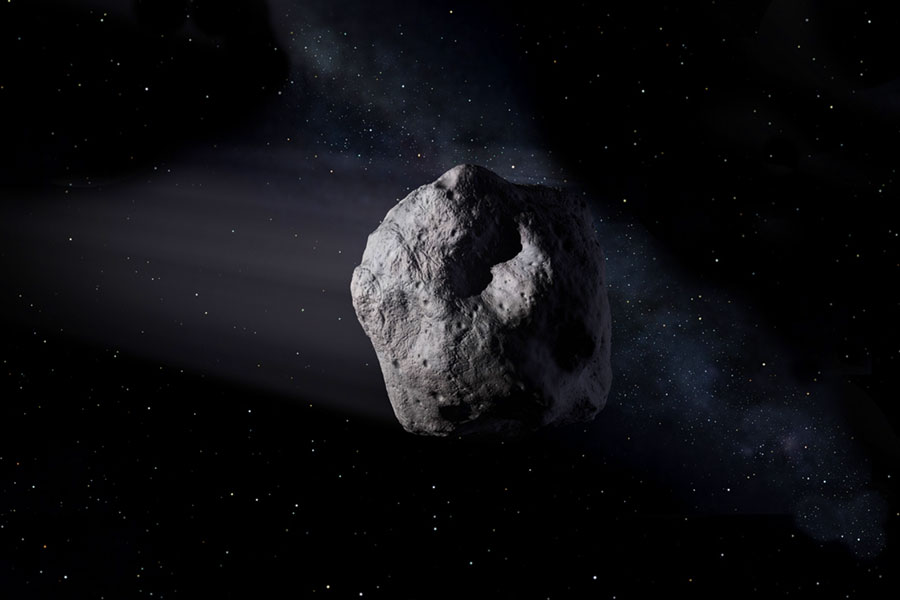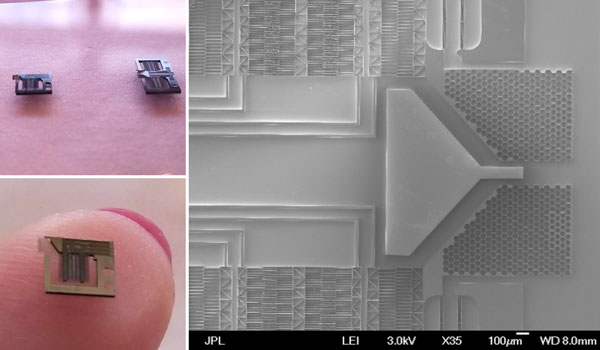Above:
Comets can give us important information about the formation of the solar system. In studying them and their composition, we may also get clues to the making of planets.
Phase Shifter
An Icy Look
Sofia Rahiminejad - Cecile Jung-Kubiak - Goutam Chattopadhyay
One of NASAs larger scientific interest lies in the studies of heavenly bodies in our solar system. Remote studies of cold bodies with spectrometers and radiometers provide information of the planets atmospheric composition and surface properties. Submillimeter radars are being developed to retrieve more information about these bodies, such as, cold ice, comet particle density, velocity, and winds on Mars. Unfortunately, these instruments require mechanical scanning or re-orientation of the spacecraft to be able to map these surfaces. This is an energy consuming and slow process.
The use of electrically steerable antennas instead would allow fast mapping without any mechanical movement of the antenna. Phase array antennas with integrated phase shifters can be used for this purpose. Today’s phase shifters are fabricated with integrated circuit technology such as CMOS and SiGe, however, these phase shifters have only been shown to operate below 300 GHz.
We are currently working on micro-electro-mechanical systems (MEMS) phase shifters operating at 550 GHz. These phase shifters are entirely made of silicon and consist of a perforated silicon slab attached to a MEMS motor. The perforated silicon slab has an artificial permittivity that shifts the phase of an incoming electromagnetic wave. The MEMS motor is based on a large deflection actuator previously developed for a compact submillimeter-wave waveguide switch, also fabricated at MDL. The MEMS motor moves the slab in and out of the waveguide, thus controlling the phase shift of the incoming electromagnetic wave. The phase can be shifted up to 180° at 550 GHz depending on the position of the slab inside the waveguide. At the moment silicon MEMS phase shifters are being developed and fabricated in the MDL cleanroom.
In the future the MEMS phase shifter can be used to develop phase array antennas at 550 GHz, which can be used for fast electronic beam steered mapping of cold bodies.
A 550 GHz phase shifter MEMs has been designed and fabricated at MDL.
+ Larger image



